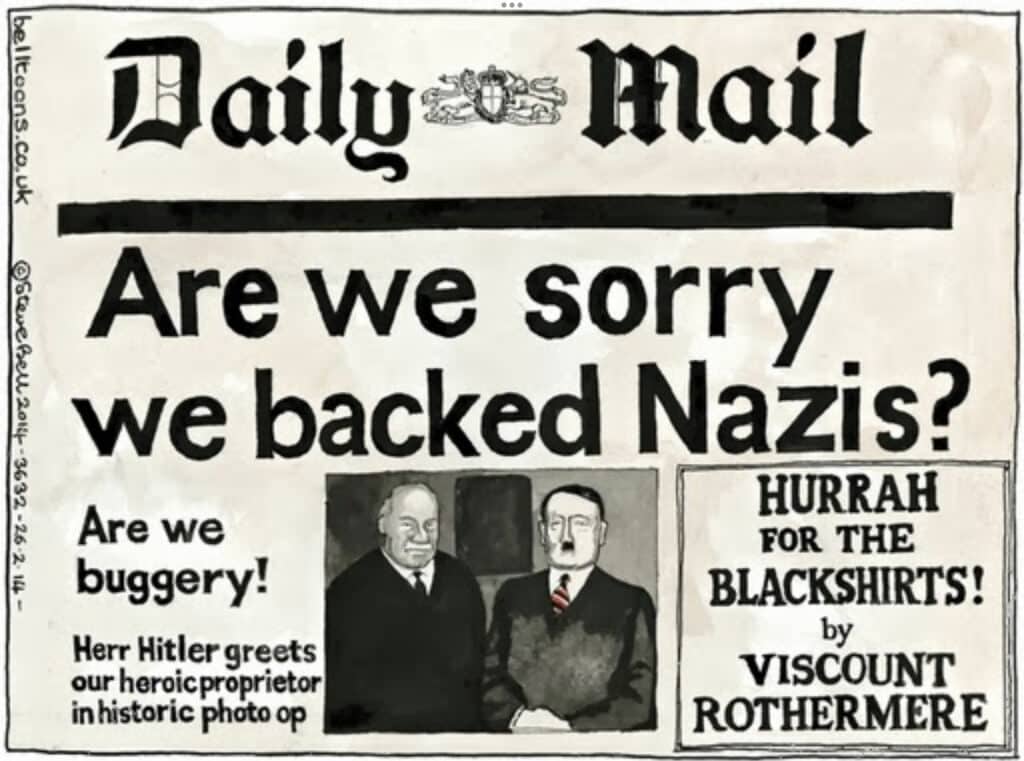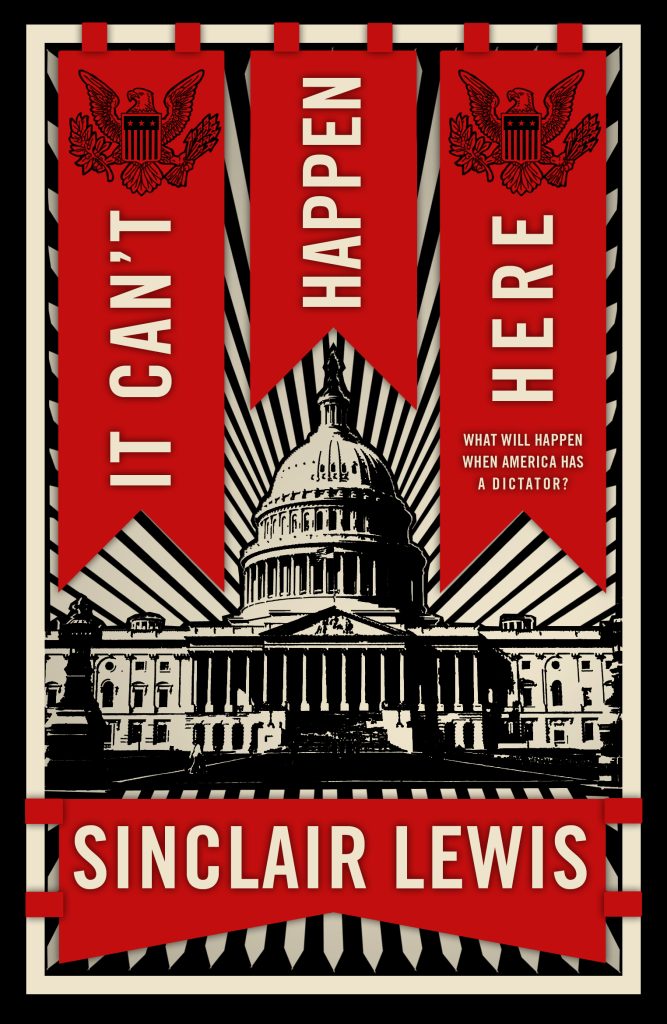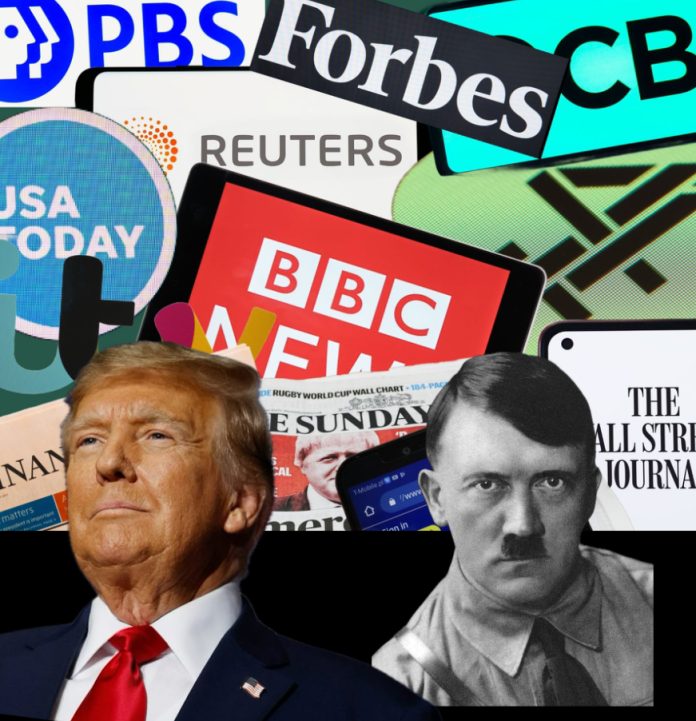The role of the media in shaping public perception cannot be overstated. Throughout history, it has served as both a warning bell and an enabler, a force for truth and, at times, an instrument of dangerous complacency. A glaring example of media failure can be observed in the 1930s when Adolf Hitler and the Nazi Party were not taken seriously enough by much of the Western press. In recent years, a strikingly similar pattern has emerged with the coverage of Donald Trump, whose far-right rhetoric, autocratic tendencies, and disregard for democratic norms have been downplayed or dismissed in many quarters. By examining the media’s failings in both periods, through specific events and media allegiances, it becomes evident that history is, alarmingly, repeating itself.
The Media’s Failure in the 1930s
During the rise of Adolf Hitler, much of the Western media either failed to grasp the true nature of his ideology or actively sought to downplay its dangers. In the early 1930s, many American and British newspapers portrayed Hitler as a rabble-rouser unlikely to hold real power, treating his rhetoric as exaggerated posturing rather than the blueprint for the atrocities to come. Even after Hitler became Chancellor of Germany in 1933, numerous journalists and commentators continued to insist that he would either moderate his views or be constrained by Germany’s political institutions.
Even in Bavaria, where Hitler had launched his political career, he was more disdained than feared. In March 1922, when Hitler was circulating on the right-wing fringe of Munich’s beer-hall political scene, Bavaria’s state interior minister considered deporting him to his native Austria, only to be allegedly told by a Social Democratic colleague that the National Socialist leader was a “comical figure” who would soon “be hurtled back into the insignificance from which he originally came.” This dismissal of Hitler as a political nobody contributed to the broader media perception that he was an extremist curiosity rather than a serious threat.
The Times of London and British Appeasement
One of the most infamous examples of media complicity was The Times of London, which regularly downplayed the Nazi threat throughout the 1930s. Its editor, Geoffrey Dawson, was a supporter of appeasement and believed that Hitler’s grievances, particularly regarding the Treaty of Versailles, were legitimate. The Times played a key role in shaping British public opinion to support Neville Chamberlain’s appeasement policies, failing to acknowledge the true nature of Hitler’s expansionist aims. Even after the annexation of Austria in 1938, the paper continued to advocate for negotiations rather than confrontation.
The Daily Mail and Fascist Sympathies

Perhaps even more egregious was the stance of The Daily Mail, which openly supported fascism in the 1930s. The paper’s owner, Lord Rothermere, was a personal admirer of Hitler and Mussolini. In 1934, The Daily Mail published the infamous headline “Hurrah for the Blackshirts!”—an endorsement of Oswald Mosley’s British Union of Fascists. Rothermere even wrote flattering letters to Hitler, praising his leadership and the Nazi movement. This kind of coverage lent legitimacy to far-right ideologies and encouraged complacency towards the rise of the Third Reich.
American Media: Isolationism and Inaction
In the United States, media coverage of Hitler was mixed. While some newspapers, such as The New York Times, reported on Nazi persecution, their coverage often lacked urgency. The Chicago Tribune, a prominent conservative newspaper, was openly isolationist and sceptical of anti-Nazi reporting, frequently dismissing concerns about Hitler’s ambitions as British propaganda. Many American media outlets were reluctant to take a strong stance against the Nazi regime, fearing accusations of warmongering or Communist sympathies.
Even after Kristallnacht in 1938, when Nazi-led violence against Jews escalated dramatically, many Western newspapers failed to push for serious intervention. The reluctance to confront Hitler head-on allowed his power to grow unchecked, culminating in the outbreak of World War II.
The Media’s Approach to Donald Trump
Fast-forward nearly a century, and the media’s treatment of Donald Trump echoes many of the same mistakes. From the outset of his political career, Trump was viewed by much of the press as an unserious figure; an entertainer rather than a politician. His extreme rhetoric was often dismissed as mere showmanship, an attention-grabbing tactic rather than a genuine ideological stance. Even as he made clear his admiration for authoritarian figures, his disdain for democratic institutions, and his willingness to use divisive rhetoric to rally his base, many in the media persisted in treating him as a political anomaly rather than a genuine threat.
Media Normalisation of Trump
During the 2016 election cycle, mainstream American media outlets devoted disproportionate coverage to Trump, often treating his campaign as an amusing spectacle. CNN, MSNBC, and major networks aired his rallies live, providing him with billions of dollars in free media exposure. Even as Trump made overtly racist and xenophobic remarks, such as calling Mexicans “rapists” or proposing a Muslim travel ban, many journalists framed his statements as political strategy rather than dangerous extremism.
A striking example was The New York Times, which published a 2016 article titled “Trump’s Surprising Strength” that examined his appeal to white working-class voters but failed to seriously analyse his authoritarian tendencies. Similarly, major networks were reluctant to call out his lies in real time, often opting for euphemisms such as “misstatements” rather than branding them outright falsehoods.
Fox News and Right-Wing Media Complicity
While some mainstream outlets normalised Trump through entertainment-style coverage, right-wing media actively enabled his rise. Fox News functioned as a propaganda machine, amplifying his false claims and attacking his critics. Hosts like Sean Hannity and Tucker Carlson consistently defended Trump’s most egregious actions, from his Muslim ban to his attempts to discredit the 2020 election. This is eerily reminiscent of how some British newspapers in the 1930s sought to legitimise Hitler’s actions, shaping public perception in dangerous ways.
The Media’s Reaction to the January 6th Insurrection
Perhaps the most damning failure of the media’s approach to Trump was its response to the January 6th insurrection. In the immediate aftermath, some outlets rightly condemned Trump’s role in inciting the attack on the U.S. Capitol. However, as time passed, much of the media shifted towards “both-sides” coverage, treating the assault on democracy as just another partisan dispute rather than an existential crisis.
Even after Trump’s impeachment and continued election denialism, major newspapers and networks began normalising his political comeback. Instead of treating him as an authoritarian threat, they framed his 2024 candidacy as a return to political normalcy; precisely the same mistake made with Hitler in the 1930s.
The Parallels and the Danger of Repeating History
Both Hitler and Trump exploited media complacency to advance their agendas. In the 1930s, Western journalists underestimated Hitler’s commitment to his radical ideology, just as many in today’s media continue to underestimate Trump’s commitment to dismantling democratic norms. In both cases, the assumption that political institutions and democratic checks would constrain an aspiring autocrat proved dangerously naive.
This is precisely the scenario that Sinclair Lewis warned about in his 1935 novel It Can’t Happen Here. The novel explores how a fascist dictatorship could take root in the United States through populist rhetoric, media complicity, and the erosion of democratic institutions. Lewis’s prescient warning remains as relevant today as it was then.
The Warning of Sinclair Lewis’s It Can’t Happen Here in the Age of Trump
Sinclair Lewis’s 1935 novel It Can’t Happen Here is a cautionary tale about the fragility of democracy and the ease with which authoritarianism can take hold, even in the United States. Written during the rise of European fascism, Lewis’s work serves as a chilling prophecy of how a populist demagogue can manipulate public fears, attack democratic institutions, and establish a totalitarian regime. Nearly a century later, the novel’s themes resonate disturbingly with the political landscape of contemporary America under Donald Trump.

Lewis’s novel follows the rise of Berzelius ‘Buzz’ Windrip, a charismatic but unscrupulous politician who capitalises on economic instability, nationalist sentiment, and widespread discontent to seize the presidency. Windrip promises to restore American greatness, railing against the press, intellectuals, and political elites while fostering a cult of personality. His administration quickly dismantles democratic norms, suppresses opposition, and establishes a paramilitary force to silence dissent.
Trump’s political ascent shares striking parallels with Windrip’s fictional rise to power. His campaign rhetoric and presidency were marked by an appeal to populism, the vilification of the media, and the undermining of democratic institutions. His slogan, Make America Great Again, echoes Windrip’s nostalgic nationalism, while his attacks on journalists as the “enemy of the people” mirror the novel’s warnings about state-controlled narratives. Trump’s attempts to erode trust in the electoral process, culminating in the 6 January insurrection, underscore the vulnerability of American democracy to authoritarian tendencies.
Another crucial theme in Lewis’s novel is the complicity of the public and political institutions in the erosion of democracy. Many Americans in It Can’t Happen Here dismiss Windrip’s rise as impossible, much like those who believed that Trump’s populism and disregard for democratic norms would never translate into tangible threats. Lewis highlights how fear and economic hardship can push even reasonable citizens into accepting authoritarian rule, a reality mirrored in the willingness of Trump’s supporters to overlook or even embrace his attacks on democratic principles.
Perhaps most disturbingly, It Can’t Happen Here demonstrates how a leader can normalise extremism. Just as Windrip’s America descends into fascism under the guise of patriotism, Trump’s administration mainstreamed conspiracy theories, emboldened white nationalism, and attempted to subvert the electoral process. The violent storming of the Capitol in 2021 stands as a stark reminder that the forces Lewis warned against are not merely theoretical; they are alive in the present.
Sinclair Lewis’s novel remains a prescient and urgent warning about the fragility of democracy. The rise of authoritarianism is not confined to history books or foreign lands; it is a real and present danger when leaders exploit division, suppress dissent, and manipulate the truth. If It Can’t Happen Here teaches us anything, it is that vigilance, resistance, and an unwavering commitment to democratic ideals are the only safeguards against the creeping tide of fascism.
In summary, history offers a stark warning about the consequences of underestimating dangerous leaders. The failure of the media in the 1930s contributed to one of the darkest periods in human history. Today, the stakes are once again high. If the press continues to treat Trump as an eccentric figure rather than an existential threat to democratic institutions, it risks facilitating another era of profound crisis. The media must learn from the past, before it is too late.
This article as inspired by:
What the Press Got Wrong About Hitler







